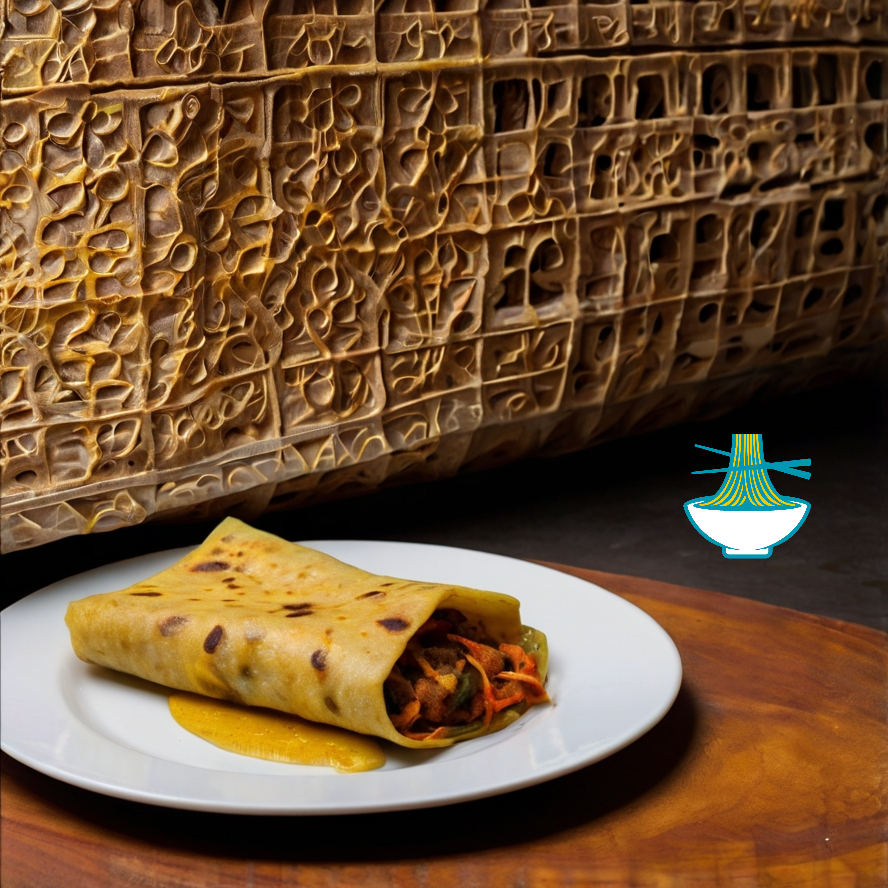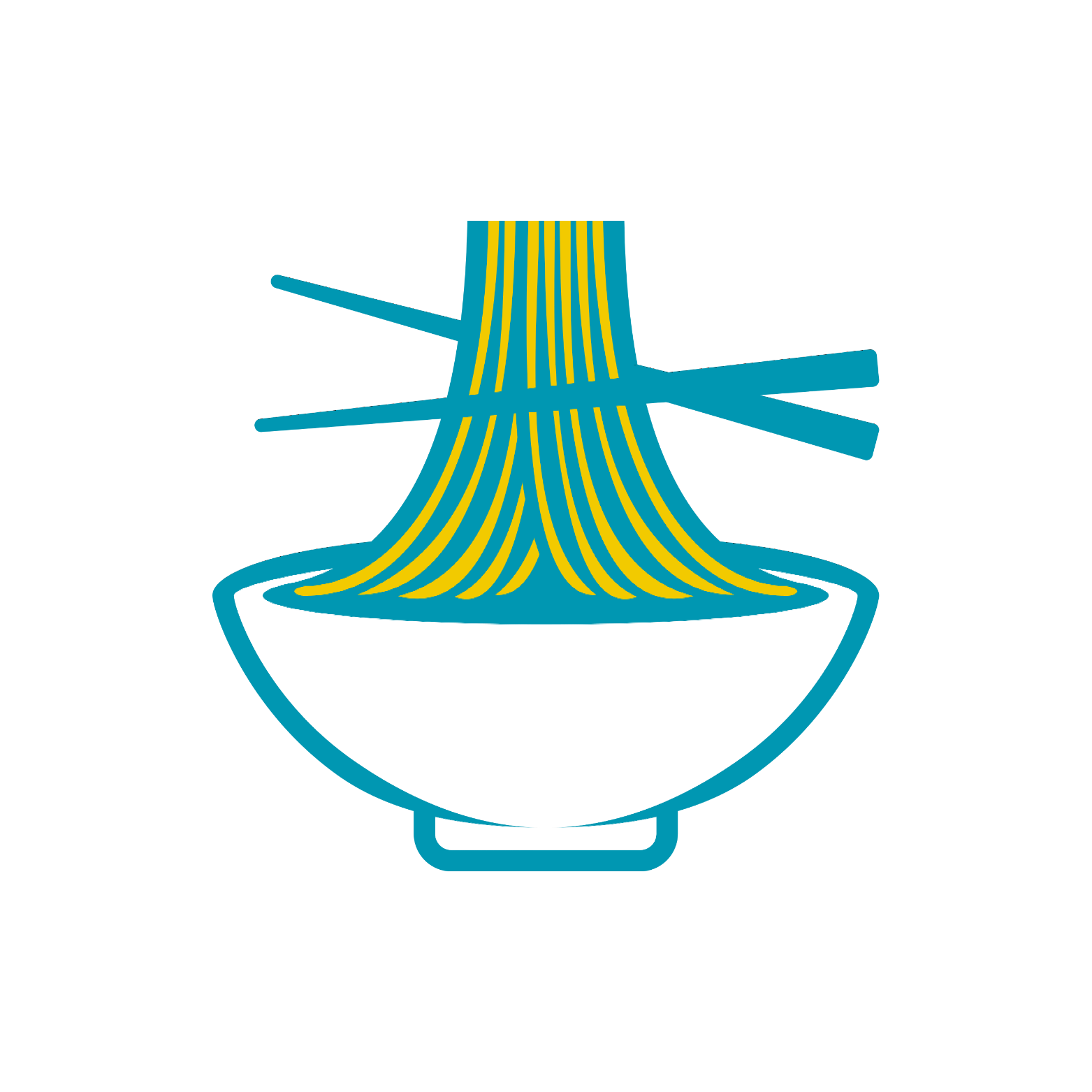Buss Up Shut Roti, a Caribbean staple, features torn, flaky flatbread paired with savory curries. Its origins trace back to Trinidad and Tobago, influenced by Indian immigrants. This delightful dish showcases the fusion of cultures, blending Indian spices with local ingredients to create a flavorful culinary experience.
Ingredients:
- 2 cups all-purpose flour
- 1 teaspoon baking powder
- 1/2 teaspoon salt
- 3/4 cup water
- 2 tablespoons vegetable oil
For Serving:
- Curried meat or vegetables of your choice
Method:
- In a mixing bowl, combine flour, baking powder, and salt.
- Gradually add water, mixing until a dough forms.
- Knead the dough on a floured surface for 5-7 minutes until smooth.
- Divide the dough into small balls, about the size of golf balls.
- Flatten each ball and brush with oil.
- Stack the flattened balls on top of each other, forming a pile.
- Roll out the stack into a thin sheet.
- Heat a skillet over medium heat and cook the rolled-out dough for 1-2 minutes on each side until lightly golden and cooked through.
- Remove from heat and tear the cooked roti into pieces resembling a "busted-up shirt."
- Serve warm with your favorite curried meat or vegetables.
This simple recipe captures the essence of Buss Up Shut Roti, providing clear instructions for both the dough preparation and the tearing technique, making it accessible for home cooks of all levels.
Nutrition Value:
All-purpose flour (2 cups):
- Calories: Approximately 440 kcal
- Carbohydrates: Around 92 grams
- Protein: About 12 grams
- Fat: Less than 1 gram
- Sodium: Varies based on brand, typically minimal
- Cholesterol: None
- Vitamins: Contains small amounts of B vitamins like niacin, thiamine, and riboflavin
- Minerals: Provides iron, magnesium, and zinc
Benefit: Main source of carbohydrates and a moderate source of protein. Contains some essential vitamins and minerals, particularly if enriched.
Baking powder (1 teaspoon):
- Calories: Negligible (typically less than 5 kcal)
- Carbohydrates: Less than 1 gram
- Protein: Negligible
- Fat: Negligible
- Sodium: Around 500-600 mg
- Cholesterol: None
- Vitamins: None
- Minerals: Contains sodium bicarbonate and cream of tartar
Benefit: Acts as a leavening agent to help the roti rise and become fluffy.
Salt (1/2 teaspoon):
- Calories: Negligible
- Carbohydrates: Negligible
- Protein: Negligible
- Fat: Negligible
- Sodium: Around 1150 mg
- Cholesterol: None
- Vitamins: None
- Minerals: Provides sodium
Benefit: Enhances flavor and helps in dough development.
Water (3/4 cup):
- Calories: None
- Carbohydrates: None
- Protein: None
- Fat: None
- Sodium: None
- Cholesterol: None
- Vitamins: None
- Minerals: None
Benefit: Essential for dough hydration and gluten formation.
Vegetable oil (2 tablespoons):
- Calories: Approximately 240 kcal
- Carbohydrates: None
- Protein: None
- Fat: Around 28 grams
- Sodium: None
- Cholesterol: None
- Vitamins: Contains vitamin E
- Minerals: None
Benefit: Adds moisture and tenderness to the roti dough and contributes to flavor. Provides healthy fats, particularly monounsaturated fats.
For Serving:
Curried Meat (e.g., chicken, beef, lamb):
- Calories: Varies based on the type and cut of meat, as well as the cooking method.
- Carbohydrates: Negligible to moderate, depending on added ingredients like onions, tomatoes, etc.
- Protein: Provides a significant amount of protein, varying with the type of meat.
- Fat: Varies based on the type of meat and any added fats during cooking.
- Sodium: Depends on seasoning and any added sauces or condiments.
- Cholesterol: Varies depending on the type of meat and cut.
- Vitamins and Minerals: Provides essential nutrients like iron, zinc, and B vitamins, particularly if lean cuts are used.
Benefit: Rich source of high-quality protein and essential nutrients, but can vary in terms of fat content and overall nutritional profile based on cooking methods and added ingredients.
2. Curried Vegetables:
- Calories: Typically lower compared to curried meat, but can vary based on the types and amounts of vegetables used.
- Carbohydrates: Provides complex carbohydrates from vegetables, varying based on the selection.
- Protein: Generally lower compared to meat-based curries but still contributes some protein, especially if legumes like lentils or beans are included.
- Fat: Varies depending on added fats like coconut milk or oil.
- Sodium: Depends on seasoning and any added sauces or condiments.
- Cholesterol: None (assuming vegetarian preparation).
- Vitamins and Minerals: Rich in vitamins, minerals, and dietary fiber, depending on the vegetables used.
Benefit: Provides essential nutrients, fiber, and antioxidants from a variety of vegetables, offering a nutritious and flavorful option for vegetarians or those seeking lighter fare.


Comments